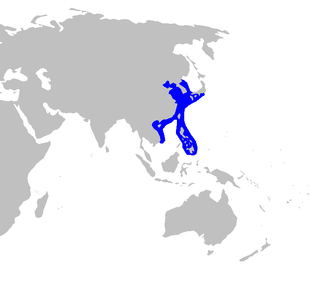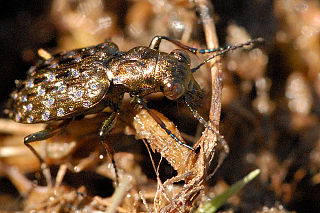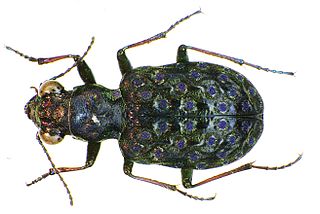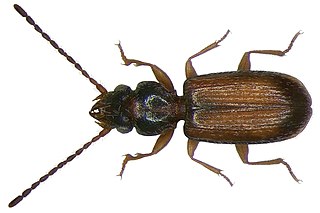
Taitō is a special ward located in Tokyo Metropolis, Japan. In English, it is known as Taitō City.

Ueno Station is a major railway station in Tokyo's Taitō ward. It is the station used to reach the Ueno district and Ueno Park—which contains Tokyo National Museum, The National Museum of Western Art, Ueno Zoo, Tokyo University of the Arts and other famous cultural facilities. A major commuter hub, it is also the traditional terminus for long-distance trains from northern Japan, although with the extension of the Shinkansen lines to Tokyo Station this role has diminished in recent years. A similar extension of conventional lines extended Takasaki Line, Utsunomiya Line and Jōban Line services to Tokyo Station via the Ueno-Tokyo Line in March 2015, using existing little-used tracks and a new viaduct; the Ueno-Tokyo Line connects these lines with the Tōkaidō Main Line, allowing through services to Shinagawa, Yokohama, Odawara and Atami stations.

Hachikō was a Japanese Akita dog remembered for his remarkable loyalty to his owner, Hidesaburō Ueno, for whom he continued to wait for over nine years following Ueno's death.

Ueno (上野) is a district in Tokyo's Taitō Ward, best known as the home of Ueno Park. Ueno is also home to some of Tokyo's finest cultural sites, including the Tokyo National Museum, the National Museum of Western Art, and the National Museum of Nature and Science, as well as a major public concert hall. Many Buddhist temples are in the area, including the Bentendo temple dedicated to goddess Benzaiten, on an island in Shinobazu Pond. The Kan'ei-ji, a major temple of the Tokugawa shōguns, stood in this area, and its pagoda is now within the grounds of the Ueno Zoo. Nearby is the Ueno Tōshō-gū, a Shinto shrine dedicated to Tokugawa Ieyasu. Near the Tokyo National Museum there is The International Library of Children's Literature. Just south of the station is the Ameya-yokochō, a street market district that evolved out of an open-air black market that sprung up after World War II. Just east is the Ueno motorcycle district, with English-speaking staff available in some stores.

The Keisei Main Line is a railway line of Japanese private railway company Keisei Electric Railway connecting Tokyo and Narita, Japan. It is the main line of Keisei's railway network. Built as an interurban between Tokyo and Narita in the early 20th century, the line has been serving as a main access route to Narita International Airport since 1978. It also serves major cities along the line such as Funabashi, Narashino, and Sakura.

The National Museum of Nature and Science is in the northeast corner of Ueno Park in Tokyo. The museum has exhibitions on pre-Meiji science in Japan. It is the venue of the taxidermied bodies of the legendary dogs Hachikō and Taro and Jiro. A life-size blue whale model and a steam locomotive are also on display outside.

The Japanese spurdog is a dogfish, a member of the family Squalidae. It is found in the western Pacific Ocean – southeastern Japan and the East China Sea, including the Republic of Korea, the Philippines, and the Arafura Sea.

The Ueno–Tokyo Line, formerly known as the Tōhoku Through Line is a railway line in Tokyo, Japan, operated by the East Japan Railway Company, linking Ueno Station and Tokyo Station, extending the services of the Utsunomiya Line, the Takasaki Line, and the Jōban Line southward and onto the Tōkaidō Main Line and vice versa. The project began in May 2008. The line opened with the 14 March 2015 timetable revision, with the project costing about JPY 40 billion.

Elaphrus is a genus of ground beetle native to the Palearctic, the Nearctic, the Near East and Northern Africa. It contains the following species:

Elaphrus riparius is a species of ground beetle native to the Palearctic and the Near East. In Europe, it is found in Austria, Belarus, Belgium, Great Britain including Shetland, Orkney, Hebrides and Isle of Man, Bulgaria, Croatia, the Czech Republic, mainland Denmark, Estonia, Finland, mainland France, Germany, Hungary, Republic of Ireland, mainland Italy (doubtful), Kaliningrad, Latvia, Liechtenstein, Lithuania, Luxembourg, Northern Ireland, mainland Norway, Poland, Russia, Slovakia, Slovenia, mainland Spain, Sweden, Switzerland, the Netherlands, Ukraine and Yugoslavia.

Elaphrus cupreus is a species of ground beetle native to the Palearctic. In Europe, it is found in Austria, Belarus, Belgium, Bosnia and Herzegovina, Great Britain including Shetland, Orkney, Hebrides and Isle of Man, the Czech Republic, mainland Denmark, Estonia, Finland, mainland France, Germany, Hungary, the Republic of Ireland, mainland Italy, Kaliningrad, Latvia, Liechtenstein, Lithuania, Luxembourg, Northern Ireland, mainland Norway, Poland, Russia, Slovakia, Slovenia, Sweden, Switzerland, the Netherlands, and Ukraine.

Elaphrus uliginosus is a species of ground beetle native to the Palearctic realm. It is widespread but rare in Europe, and is absent from much of Southern Europe. It is a wetland and coastal species.

Parribacus japonicus, the Japanese mitten lobster, is a species of slipper lobster. Though the common name for this lobster is the Japanese mitten lobster, it is locally called zōri-ebi (ゾウリエビ) – zōri denoting the Japanese sandal it resembles, and ebi meaning shrimp or lobster.

The Japanese Lantern is a stone lantern in West Potomac Park, Washington, D.C. It is located next to the Tidal Basin, among the cherry trees first planted in 1912. It is lighted during the annual National Cherry Blossom Festival.

Trephionus is a genus of ground beetles in the family Carabidae. There are about 19 described species in Trephionus, found in Japan. Five of these were new species described in 2018.

Perileptus is a genus of beetles in the family Carabidae, containing the following species:
Trechiama is a genus of beetles in the family Carabidae, containing the following species:
Elaphrus lecontei is a species of ground beetle in the subfamily Elaphrinae. It was described by Crotch in 1876.

Trechini is a large tribe of ground beetles in the family Carabidae. There are more than 270 genera and over 2,400 described species in Trechini, found throughout the world.
Epaphius is a genus of beetles belonging to the family Carabidae.















